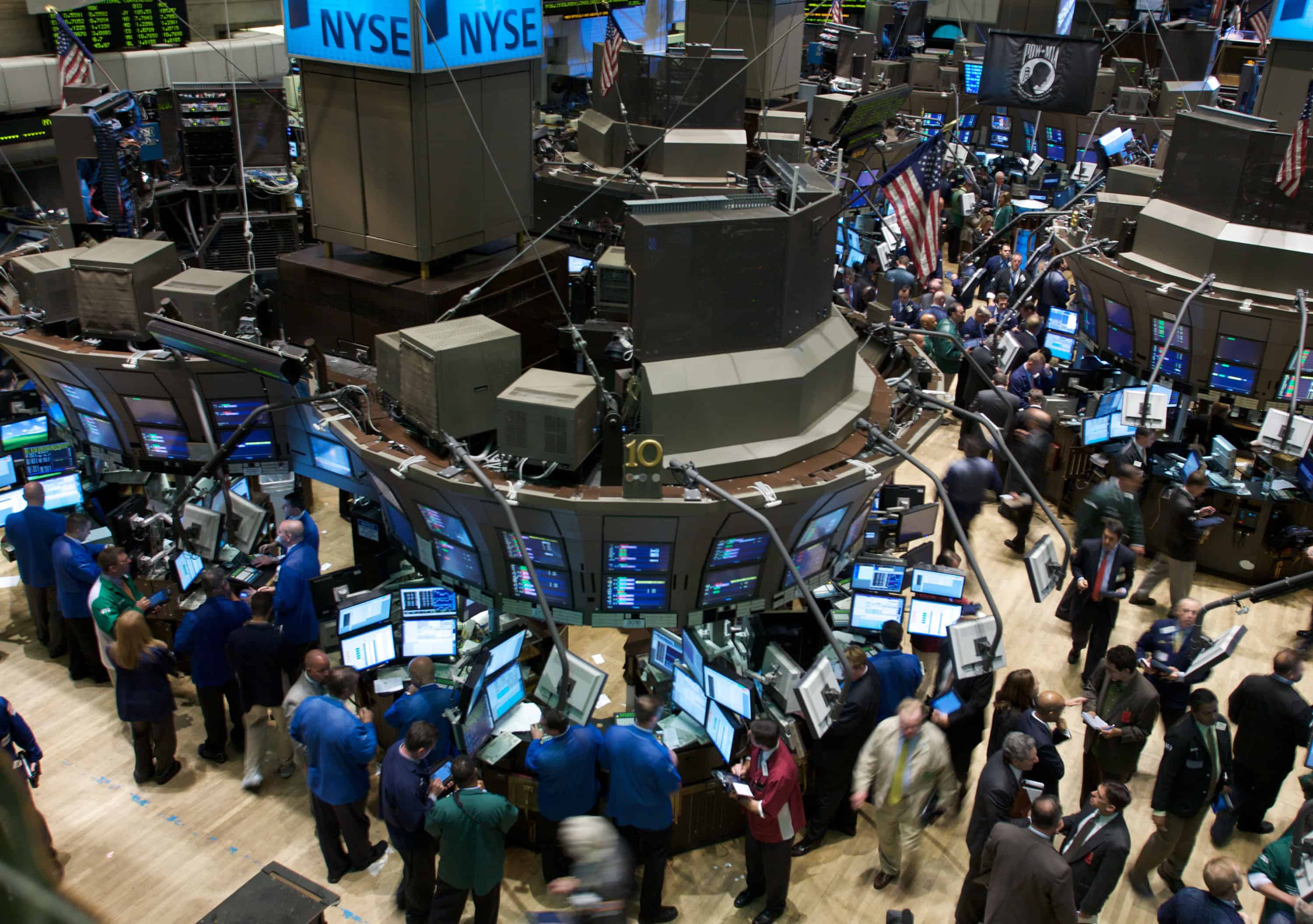
Strong earnings from Intel and other companies drove Wall Street indexes to record closing highs on Friday, while the U.S. dollar remained weak after recent comments by the U.S. Treasury secretary.
The S&P 500 jumped 1.2 percent, its biggest daily percentage gain since March 1. The S&P and the two other main indexes all notched their best four-week runs since 2016.
Stocks around the globe also rose. The MSCI world equity index .MIWD00000PUS, which tracks shares in 47 countries, climbed for a 10th straight week, its longest weekly winning streak since 1999.
Shares of Intel Corp (INTC.O) jumped more than 10 percent and hit their highest level since October 2000 a day after the company reported quarterly results.
The results of Intel and some other companies helped investors shrug off weaker-than-expected U.S. economic growth data. Fourth-quarter gross domestic product increased at a 2.6 percent annual rate, the Commerce Department reported.
Shares of drugmaker AbbVie Inc (ABBV.N) also climbed 10 percent after the company significantly boosted its 2018 earnings forecast and said it hopes to accelerate dividend growth and share buybacks.
“We continue to see these positive steps in the right direction and definitely earnings are clearly justifying a lot of the recent move that we’ve had,” said Ryan Detrick, senior market strategist at LPL Financial in Charlotte, North Carolina.
Fourth-quarter earnings growth for the S&P 500 is now estimated at 13.2 percent, according to Thomson Reuters data, up from 12 percent at the start of the year.
Also helping equities, the U.S. dollar remained weak against a basket of major currencies, still bruised by comments earlier this week by U.S. Treasury Secretary Steven Mnuchin in support of a weak dollar and following Friday’s U.S. growth data.
President Donald Trump’s comments on Thursday in favor of a “strong dollar,” a day after Mnuchin said a weaker greenback would help U.S. trade balances in the short term, failed to keep dollar bears in check.
The dollar index .DXY, which measures the greenback against a basket of six major currencies, was down 0.33 percent at 89.1 and on track for a weekly fall of 1.6 percent.
The Dow Jones Industrial Average .DJI rose 223.92 points, or 0.85 percent, to 26,616.71, the S&P 500 .SPX gained 33.62 points, or 1.18 percent, to 2,872.87, and the Nasdaq Composite .IXIC added 94.61 points, or 1.28 percent, to 7,505.77.
The pan-European FTSEurofirst 300 index .FTEU3 rose 0.54 percent, and MSCI’s gauge of stocks across the globe .MIWD00000PUS gained 0.67 percent. For the week, the MSCI index was up 2 percent.
In a weekly note on capital flows, Bank of America Merrill Lynch analysts said that 98 percent of global equity markets are now trading above 50- and 200-day moving averages, though the pace of the melt-up meant a correction was increasingly likely.
World equity markets have rallied over the past year, buoyed by a synchronized uptick in global economic growth in a boon to corporate profits and stock valuations.
U.S. Treasury yields climbed after the U.S. GDP data and after the governor of the Bank of Japan said inflation is finally close to reaching the central bank’s 2 percent target.
Benchmark 10-year notes US10YT=RR last fell 11/32 in price to yield 2.6599 percent, from 2.621 percent late on Thursday.
In the energy market, oil prices settled higher, with crude also posting a weekly gain as the weaker dollar underpinned prices.
Brent crude futures LCOc1 settled up 10 cents, or 0.1 percent, at $70.52 per barrel, while U.S. crude futures CLc1 closed at $66.14, up 63 cents, or nearly 1 percent. For the week, Brent posted a nearly 2.7 percent gain, while U.S. crude was up 4.3 percent for the week.
Gold also rose with the dollar’s decline. Spot gold XAU= was up 0.3 percent at $1,351.86, up 1.5 percent this week.

